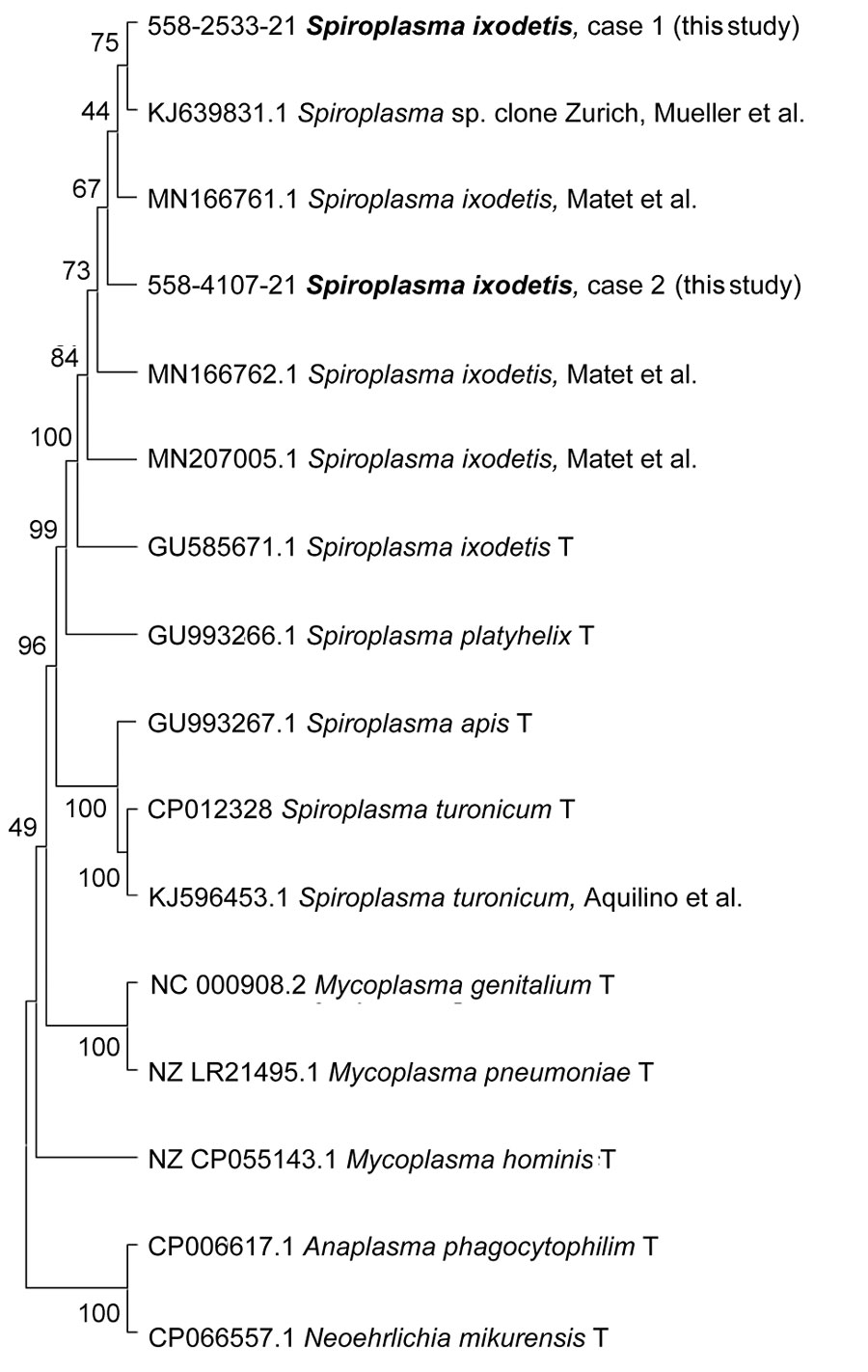Volume 28, Number 8—August 2022
Dispatch
Spiroplasma ixodetis Infections in Immunocompetent and Immunosuppressed Patients after Tick Exposure, Sweden
Figure 1

Figure 1. Spiroplasma ixodetis infections in immunocompetent and immunosuppressed patients after tick exposure, Sweden. Neighbor-joining tree based on partial 16S rRNA sequences of clinical isolates of Spiroplasma spp., other members of the family Mollicutes (Mycoplasma spp.), and tickborne bacterial pathogens of the family Anaplasmataceae (Anaplasma phagocytophilum and Neoehrlichia mikurensis). Type strains are indicated by T, and clinical samples from this study are indicated in bold. Percentage values of replicate trees in which the associated taxa clustered together in the bootstrap test (1,000 replicates) are shown next to the branches. Evolutionary distances were computed by using the Kimura 2-parameter method and are in the units of number of base substitutions per site. Evolutionary analyses were conducted by using MEGA11 (https://www.megasoftware.net).
1Current affiliation: Sorbonne University, Paris, France.
2These authors contributed equally to this article.
3These senior authors contributed equally to this article.